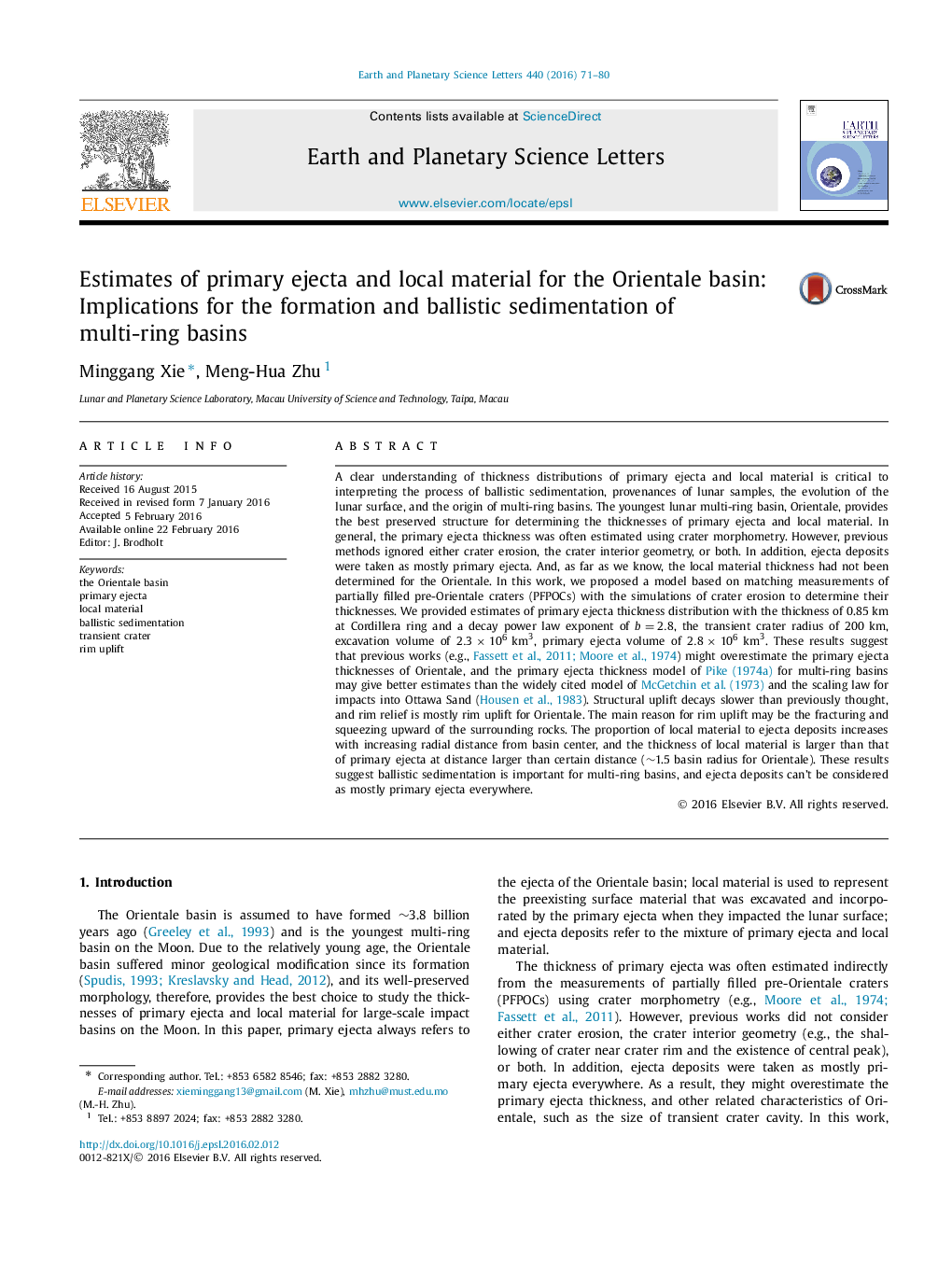| کد مقاله | کد نشریه | سال انتشار | مقاله انگلیسی | نسخه تمام متن |
|---|---|---|---|---|
| 6427591 | 1634716 | 2016 | 10 صفحه PDF | دانلود رایگان |
عنوان انگلیسی مقاله ISI
Estimates of primary ejecta and local material for the Orientale basin: Implications for the formation and ballistic sedimentation of multi-ring basins
ترجمه فارسی عنوان
برآورد مقادیر اولیه و محصوالت محلی حوضه شرقی: پیامدهای تشکیل و رسوب گذاری بالستیک حوضه های چند حلقه ای
دانلود مقاله + سفارش ترجمه
دانلود مقاله ISI انگلیسی
رایگان برای ایرانیان
کلمات کلیدی
موضوعات مرتبط
مهندسی و علوم پایه
علوم زمین و سیارات
علوم زمین و سیاره ای (عمومی)
چکیده انگلیسی
A clear understanding of thickness distributions of primary ejecta and local material is critical to interpreting the process of ballistic sedimentation, provenances of lunar samples, the evolution of the lunar surface, and the origin of multi-ring basins. The youngest lunar multi-ring basin, Orientale, provides the best preserved structure for determining the thicknesses of primary ejecta and local material. In general, the primary ejecta thickness was often estimated using crater morphometry. However, previous methods ignored either crater erosion, the crater interior geometry, or both. In addition, ejecta deposits were taken as mostly primary ejecta. And, as far as we know, the local material thickness had not been determined for the Orientale. In this work, we proposed a model based on matching measurements of partially filled pre-Orientale craters (PFPOCs) with the simulations of crater erosion to determine their thicknesses. We provided estimates of primary ejecta thickness distribution with the thickness of 0.85 km at Cordillera ring and a decay power law exponent of b=2.8, the transient crater radius of 200 km, excavation volume of 2.3Ã106Â km3, primary ejecta volume of 2.8Ã106Â km3. These results suggest that previous works (e.g., Fassett et al., 2011; Moore et al., 1974) might overestimate the primary ejecta thicknesses of Orientale, and the primary ejecta thickness model of Pike (1974a) for multi-ring basins may give better estimates than the widely cited model of McGetchin et al. (1973) and the scaling law for impacts into Ottawa Sand (Housen et al., 1983). Structural uplift decays slower than previously thought, and rim relief is mostly rim uplift for Orientale. The main reason for rim uplift may be the fracturing and squeezing upward of the surrounding rocks. The proportion of local material to ejecta deposits increases with increasing radial distance from basin center, and the thickness of local material is larger than that of primary ejecta at distance larger than certain distance (â¼1.5 basin radius for Orientale). These results suggest ballistic sedimentation is important for multi-ring basins, and ejecta deposits can't be considered as mostly primary ejecta everywhere.
ناشر
Database: Elsevier - ScienceDirect (ساینس دایرکت)
Journal: Earth and Planetary Science Letters - Volume 440, 15 April 2016, Pages 71-80
Journal: Earth and Planetary Science Letters - Volume 440, 15 April 2016, Pages 71-80
نویسندگان
Minggang Xie, Meng-Hua Zhu,
